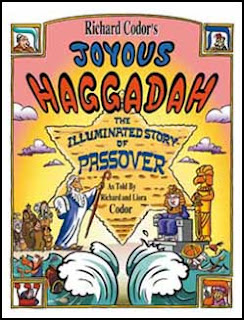FOOD FOR THE SOUL
FOOD FOR THE SOUL
The
Festival of Pesach (Passover), which we celebrate in three days time, is highly
symbolized by food. Throughout the eight days of the Festival, matzah (unleavened
bread) is eaten instead of ordinary bread, to recall the hurried baking of matzah
during the Exodus itself.
On
the last night in Egypt each Jewish household ritually slaughtered a lamb and
then ate it at a family gathering. This banquet – reverent in purpose and
joyful in practice – has been perpetuated through the ages in the Pesach
`Seder` ceremony, celebrated on Pesach eve.
To
set the Seder Table for the ceremonies, the following will be arranged on a
special Seder plate: Bitter herbs - in memory of the `bitterness` of slavery in
Egypt; a sweet paste made of apples, and nuts mixed with a little wine – to
soften the bitterness and simulate the `mortar` used by our ancestors in
building for the Egyptians; a bone with a little meat roasted - in memory of
the ancient Temple sacrifice; a baked egg - a symbol of mourning for the lost
Temple; lettuce or celery dipped in salt water - the hors d’oeuvres leading
directly to the meal.
`Seder`
literally means `programme`, which indicates that the ceremonies accompanying
the recital of a small book called the `Haggadah`, are carefully prescribed.
The `Haggadah` is a free-wheeling exposition of the ancient Exodus from Egypt,
in a style which can includes ethics, history, folklore, anecdote, songs - and
any kind of speculation, serious or light-hearted, which can be spun out of the
verses of Holy Writ.
Bringing
together all these elements within the bounds of a small book, expresses a uniquely Jewish attitude to life – a
seriousness that can break into a smile, a reverence that doesn’t have to be
pompous, a sense of tragedy that never leads to cynicism and despair, and an empathy for suffering that transforms itself constantly through courage and
hope. The Seder is the most universally observed and, therefore, the most
unifying of all Jewish ceremonies.
Almost
every year, the Haggadah has been presented afresh with endless commentary and
illustrations. There are more versions of the Haggadah than any other published
book. The miracle of Jewish re-birth in our times is that, if new dimensions of experience have
been added, nothing sacred to the tradition has been taken away.
In
the words of Rabbi Jonathan Sacks: “Pesach contains a message of hope for all
of us. Each year we tell the story of the exodus, that begins in suffering and
ends in liberation and joy. That is the shape of the human story. Out of the
bad, comes good, out of the curse comes blessing”.
We hope
and pray that, out of the coronavirus pandemic, people will be revitalised with
a sense of renewal and collective responsibility.



Comments
Post a Comment